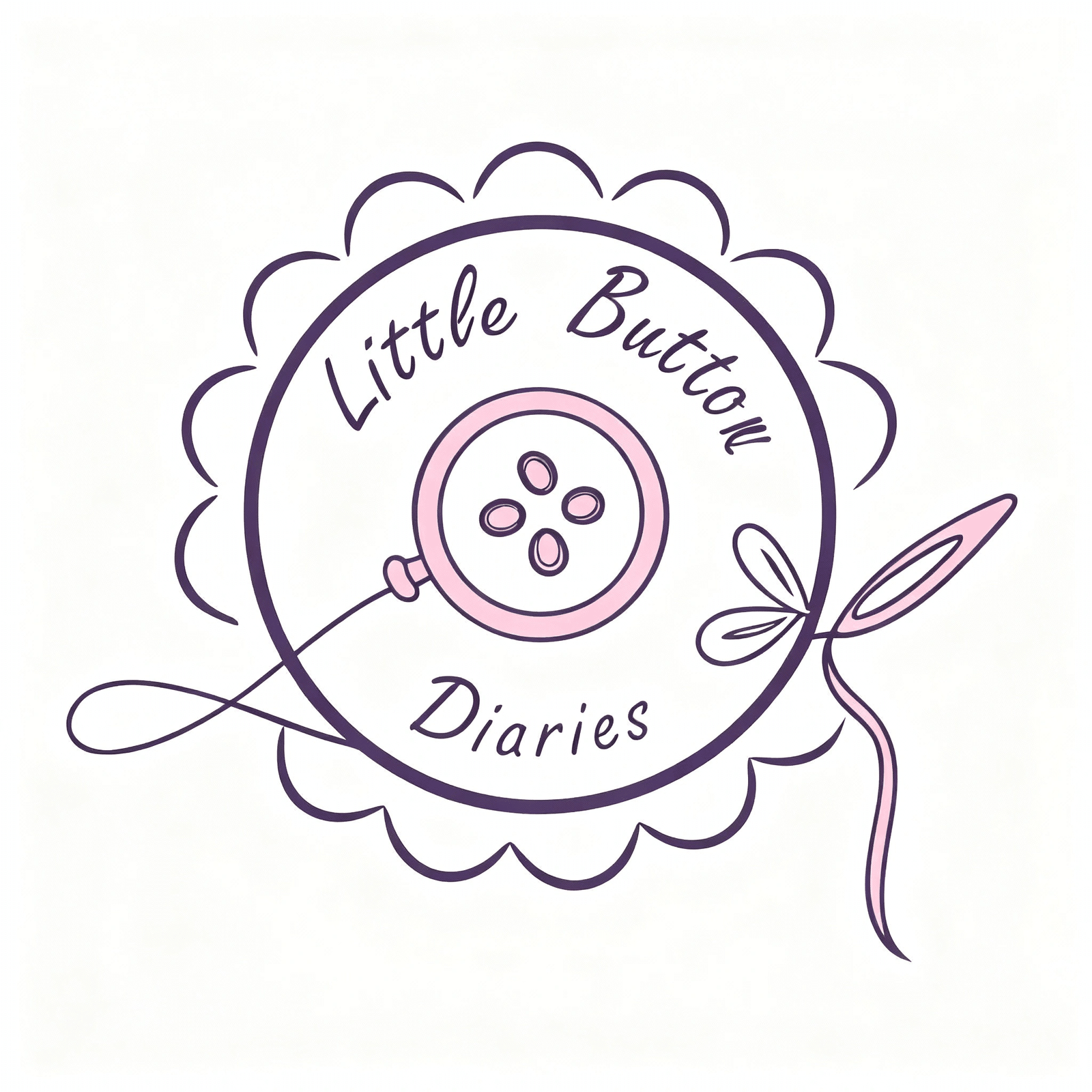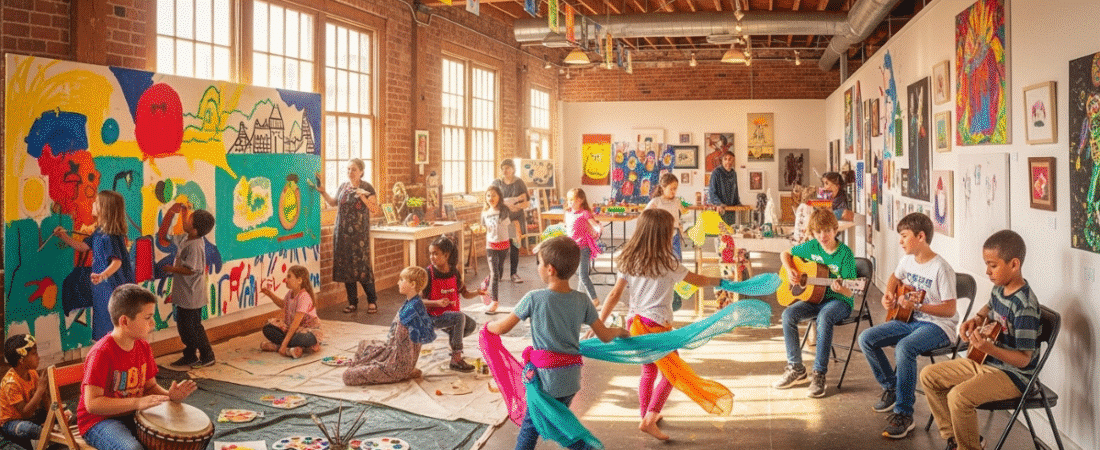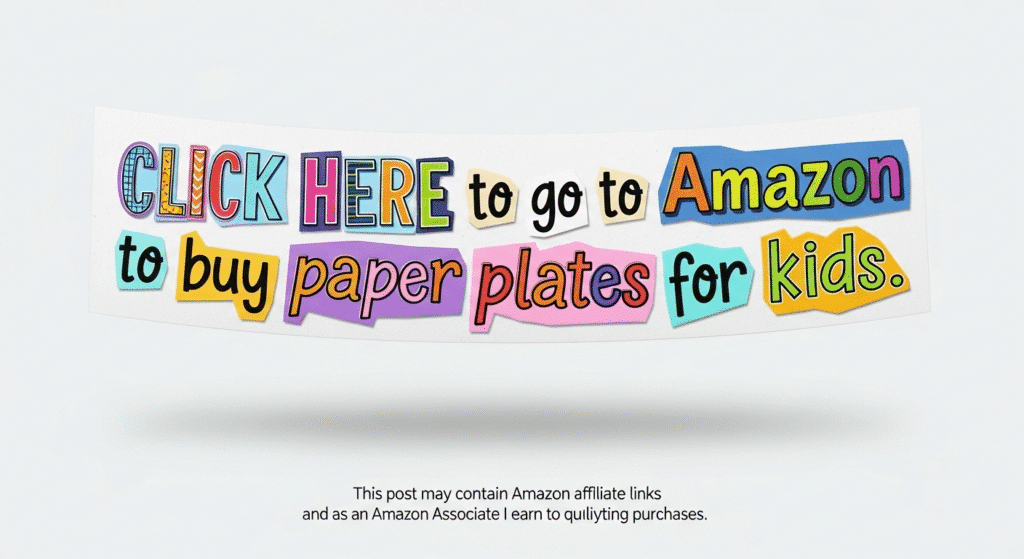When I first got interested in arts for development, I quickly saw how powerful creativity can be in shaping communities—especially for children. It’s not just about fun activities or colorful drawings—it’s about giving kids a way to express themselves, connect with others, and feel like they belong. Ensuring access to arts and culture for all children, especially those from underserved and marginalized backgrounds, is essential for fostering inclusion, confidence, and participation. In neighborhoods with fewer resources, arts and culture can help children build social connections and improve their well-being. In fact, in neighborhoods with fewer economic resources, arts and culture can create social capital, contributing positively to community well-being. Community development means making towns and cities better places to grow up, and arts play a big role in that. In this article, you’ll find strategies and examples for using arts to support children’s growth and community development.
- Why Arts Matter for Children in Community Development
- Getting Children and Families Involved
- How Arts Help Children and Economic Development
- Building Economic Prosperity Through Arts for Children
- Celebrating Cultural Activities with Children
- Real Stories: Arts Making a Difference for Children
- Tips for Getting Started with Arts for Children in Development
- The Power of Collaboration for Children
- Measuring Success and Impact for Children
- Looking Ahead with Children in Focus
Why Arts Matter for Children in Community Development
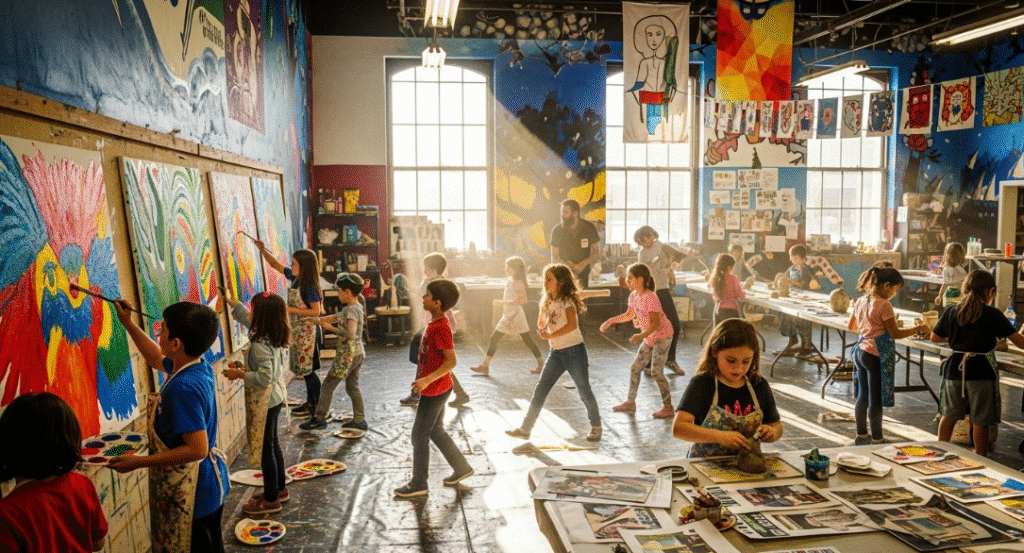
Art is a powerful way for children to tell their stories and share their feelings. When kids get involved in creative projects, it helps them build pride and a sense of identity. It’s like giving every child a chance to say, “This is who I am.” That feeling of belonging helps children care about their neighborhoods and want to make them better.
Arts also open up important conversations about fairness and social justice. When young people express themselves through music, dance, or drawing, it creates space for dialogue about equality and respect. Many community programs focus on including arts to help children and youth share their voices and learn about these critical issues.
Getting Children and Families Involved
One thing I’ve noticed is that when children and their families are part of arts projects, the results are stronger and last longer. It’s about more than just attending events—it’s about having a say and working together. For example, kids can help design murals that tell their neighborhood’s story or participate in performances that celebrate their culture and experiences. Collaborative mural programs spark conversation about local history and aspirations, instilling a sense of ownership among residents. Programs like after-school art clubs and workshops provide safe, creative spaces where children can learn new skills, make friends, and feel part of something bigger.
Hands-on activities like painting, storytelling, or poetry help children express themselves and develop awareness of social and environmental issues. When children and families feel included, they’re more likely to support and protect community projects.
How Arts Help Children and Economic Development
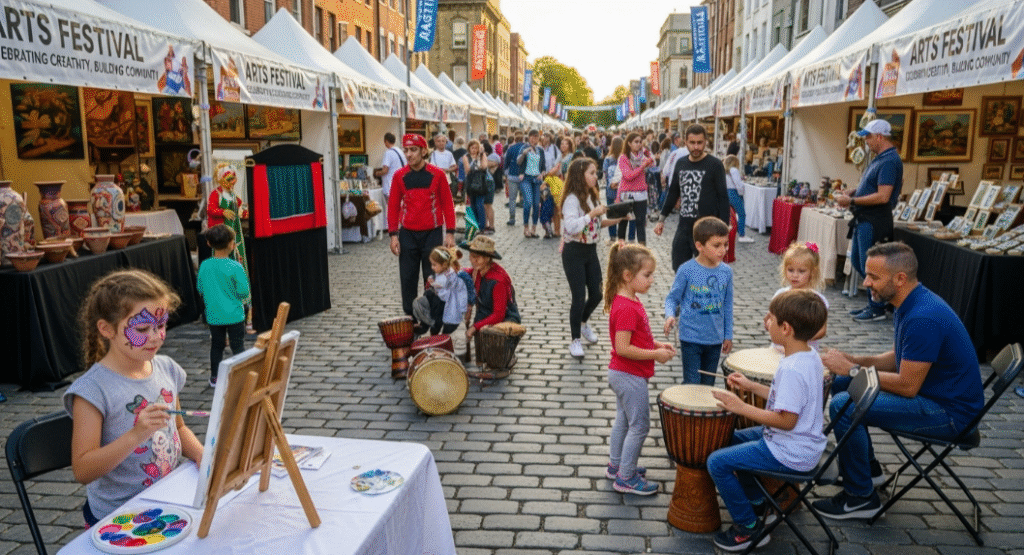
Arts aren’t just good for kids’ creativity—they also support local economies that families depend on. Creative projects can bring visitors, support local businesses, and make neighborhoods more welcoming places for families to live. Cities often use arts festivals or public art to bring energy and attention to areas that need a boost, benefiting children and their families.
Investing in arts helps create jobs—not only for artists and performers but also for event organizers and local shop owners. This kind of growth builds a stronger, more diverse economy that supports families and children. Plus, arts make neighborhoods feel unique and welcoming, which helps children grow up in vibrant, caring communities.
Building Economic Prosperity Through Arts for Children
To make a real difference for children, communities need to work together. Partnerships between schools, local governments, nonprofits, artists, and families are essential. When everyone contributes—whether it’s funding, skills, or ideas—the arts can thrive and benefit children.
Training programs help young artists and creative entrepreneurs develop their talents and careers. After-school clubs and workshops offer children safe places to explore creativity, build teamwork skills, and grow positively. Having spaces like community centers, theaters, and galleries gives children a place to gather, learn, and share their work.
Tracking participation and outcomes helps guide future programs and funding to better serve children’s needs.
Celebrating Cultural Activities with Children
Cultural activities bring joy and connection to children and families. Music, dance, theater, and other art forms help children connect across backgrounds and generations. Each cultural event enriches children’s understanding and engagement, helping them appreciate diversity and build empathy.
Funding and grants provide the resources needed to keep these programs running and growing. Ongoing feedback ensures activities remain meaningful and inclusive for all children and families. We encourage you to attend local events and celebrate the artists and organizers who make these experiences possible for children.
Real Stories: Arts Making a Difference for Children
I’ve seen projects where arts have truly changed children’s lives. In one city, a youth group used slam poetry to talk about challenges like violence, mental health, and gender issues, giving young people a voice and bringing the community closer. Another project involved children creating a mural focused on local environmental issues, sparking important conversations with adults and officials. The Philadelphia Mural Arts Program has transformed urban spaces and instilled a sense of shared ownership and pride.
These examples show how arts can be more than fun—they can teach, heal, and inspire hope. They reflect children’s diverse perspectives and resilience, highlighting the strength found in their stories.
Tips for Getting Started with Arts for Children in Development
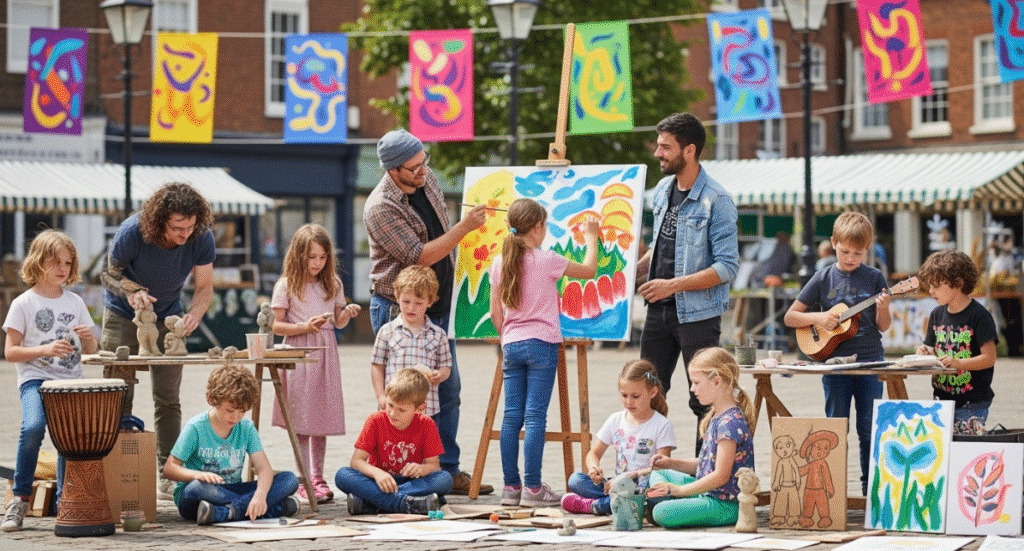
If you want to bring more arts into your work with children, here are some simple ideas:
- Listen to children’s stories and find out what matters to them.
- Partner with local artists and organizations experienced in working with kids.
- Create programs that are easy for children to join and welcoming to all.
- Look for funding opportunities like grants or sponsorships suited to children’s programs.
- Make space for arts in schools, parks, and community centers where children gather.
- Keep track of what works and adjust programs to better serve children’s needs.
Sign up for updates and newsletters to stay informed about arts for development focused on children.
The Power of Collaboration for Children
Collaboration is key to making arts work for children. When schools, nonprofits, local government, and artists join forces, the impact grows. Each partner brings strengths that help overcome challenges and create meaningful opportunities for children.
Peer support among those working with children in arts and development builds knowledge and sparks new ideas.
Measuring Success and Impact for Children
To understand how arts programs help children, it’s important to look beyond events and activities. Cities and organizations need strong evaluation methods that consider social, economic, and cultural benefits for children and families.
A good starting point is creating clear ways to measure success, such as how many children participate, the skills they gain, and how arts programs support local jobs and economic growth. Gathering data and listening to children and families helps improve programs and identify new opportunities.
Research and feedback help tailor services to children’s needs and foster partnerships that support creative projects and provide essential resources.
Funding is crucial to ensure arts programs for children have the resources to thrive. Grants, local business support, and innovative funding models help sustain programs that benefit children’s creativity, education, and well-being.
Community engagement remains central. When children, families, and community members help plan and evaluate programs, the arts truly reflect the community’s values and contribute to social justice and diversity. Collaborative arts projects can help communities heal from collective trauma by bringing people together and fostering hope.
Looking at successful examples, such as the Nevada Arts Council’s Community Arts Development Program and El Segundo’s Cultural Arts Development Program, shows how arts can create jobs, boost economies, and bring communities together—all benefiting children and their futures. The arts contribute over $4 million to arts and culture in El Segundo through various programs.
Looking Ahead with Children in Focus
The arts have a special way of bringing children and communities together to create better places to grow up. Whether through a school mural, a music festival, or a theater show, creative projects build pride, create opportunities, and spark important conversations for children’s futures.
If you work with children or families, consider how arts can fit into your plans. It’s not about big budgets—it’s about creating spaces where children can share, create, and thrive together.
